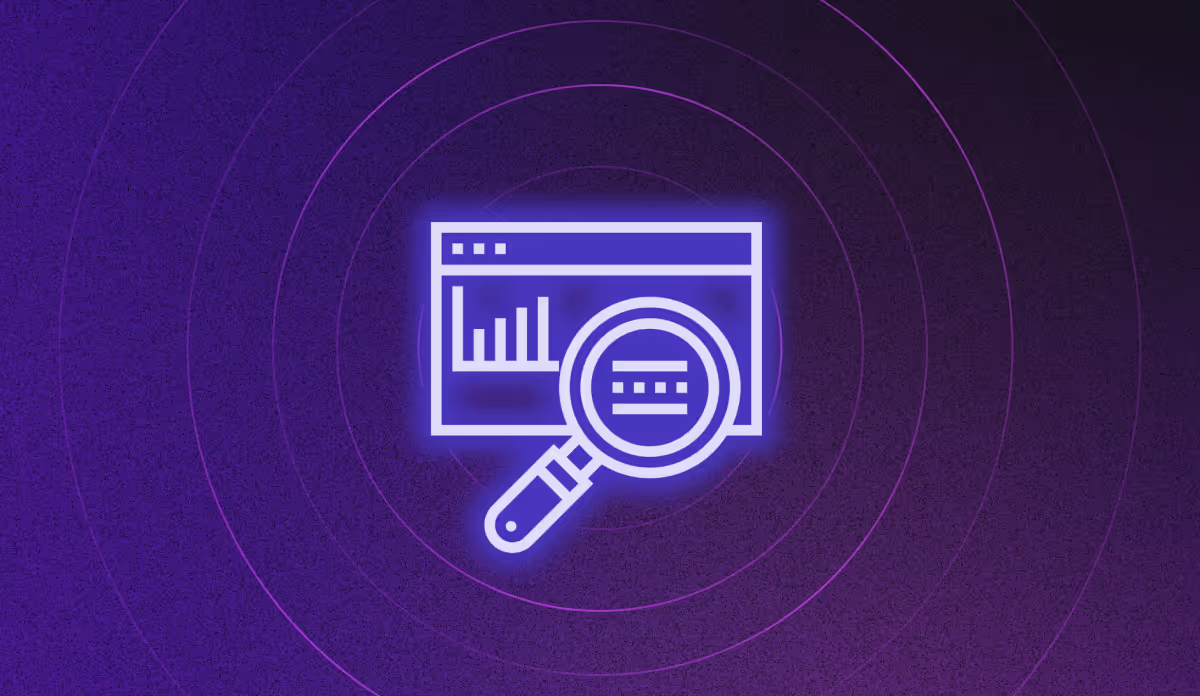Why traditional APM tools fail ecommerce sites (+ 5 key reasons and a better alternative)

Traditional Application Performance Monitoring (APM) tools were built for server and infrastructure uptime—not modern ecommerce challenges. But today, ecommerce success depends on flawless digital experiences, fast load times, and error-free checkouts. If your APM tool can’t tie performance issues to lost revenue or abandoned carts, it’s failing your business.
In this article, we break down 5 reasons why traditional APM tools don’t work for ecommerce—and what to look for in a modern ecommerce monitoring solution.
The gap between monitoring and business outcomes
Application Performance Monitoring (APM) tools were originally designed for IT and DevOps teams. Their focus? Server uptime, backend performance, and infrastructure stability.
But ecommerce today demands more.
A slow page load, broken checkout field, or third-party script failure doesn’t just affect system logs—it affects sales, customer trust, and revenue per session. That’s where traditional APM tools fall short. They monitor systems but miss opportunities to drive conversion and revenue.
At Noibu, we work with ecommerce leaders who’ve tried both traditional APM and smarter, revenue-focused solutions. The difference is night and day.
1. Traditional APM tools monitor infrastructure—not revenue impact
Legacy APM tools were built to track metrics like CPU usage, memory load, and server uptime. Useful for IT? Sure. But they miss what ecommerce teams care about most: conversion performance.
What’s missing:
- APMs can’t show how slow load times impact cart abandonment.
- They don’t track how a JavaScript delay affects checkout completion.
- They can’t prioritize fixes based on lost revenue or missed conversions.
If a broken promo code field is costing you $15k/day in lost orders, your team needs to know that immediately.
2. APM tools miss frontend and UX issues that break conversions
Modern ecommerce sites are rich, complex, and frontend-heavy—built with JavaScript frameworks, third-party integrations, and personalized components.
Traditional APM tools mostly monitor backend performance. That means they:
- Miss slow-loading product pages caused by third-party scripts
- Don’t detect broken UI elements like “Buy Now” buttons that don’t respond
- Can’t spot frontend logic errors that block mobile users from completing checkout
3. They create alert fatigue without prioritization
One of the biggest frustrations ecommerce teams share: traditional APMs generate too much noise and not enough signal.
You get thousands of logs, alerts, and traces—but no clarity on what’s actually hurting the business.
The result:
- Engineers waste time filtering through non-critical alerts
- Business teams don’t know which issues to prioritize
- Revenue-impacting problems get buried in the noise
4. They lack ecommerce-specific KPIs and context
Ecommerce teams care about conversion rates, session performance, funnel drop-off, and cart abandonment—not server health.
But traditional APM tools don’t measure:
- Performance issues tied to session behavior
- Frontend bugs that impact AOV (Average Order Value)
- Revenue loss from critical UX errors or delays
What’s needed:
Tools built for ecommerce, with:
- Revenue-linked insights into performance bottlenecks
- Session-based analytics showing exactly where customers drop off
- Journey mapping, connecting site experience to business outcomes
In short: ecommerce needs monitoring that thinks like a revenue team, not just an ops team.
5. They require heavy engineering to extract value
Most traditional APM platforms are complex, technical, and require engineering support to:
- Configure dashboards
- Interpret logs
- Understand the business impact
That’s a problem for ecommerce teams, who need to move fast and act on insights without coding knowledge.
The future: From error monitoring to conversion intelligence
The old way: find errors, fix them, hope it helps.
The new way: find what’s blocking conversions, quantify revenue loss, and prioritize action based on business impact.
Traditional APM tools are stuck in the past. They don’t understand ecommerce customer journeys or conversion behavior—and they can’t tell you where your biggest opportunities to grow revenue lie.
Noibu is helping teams shift from error detection to conversion opportunity intelligence—so you can grow smarter.




